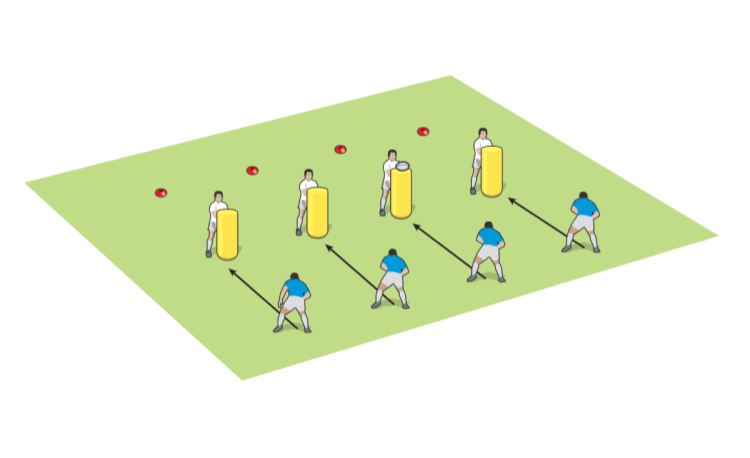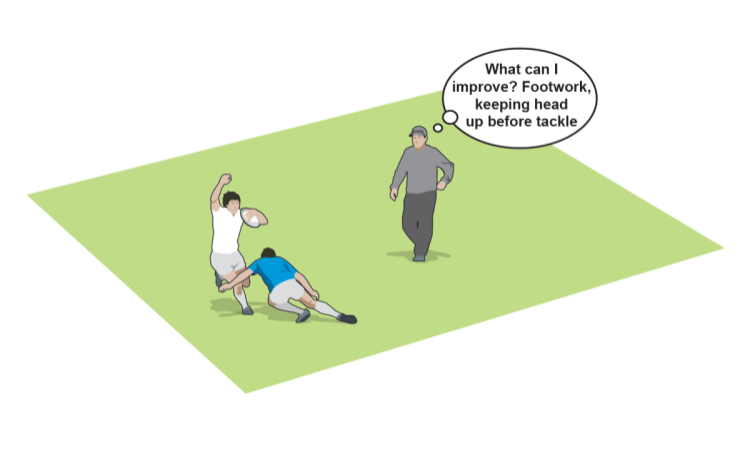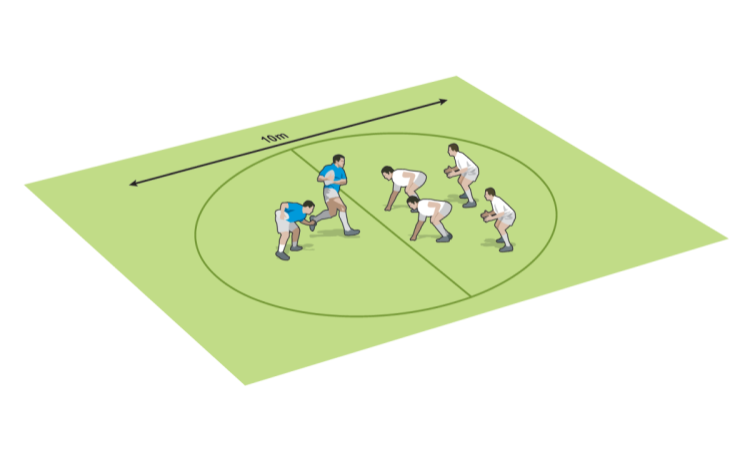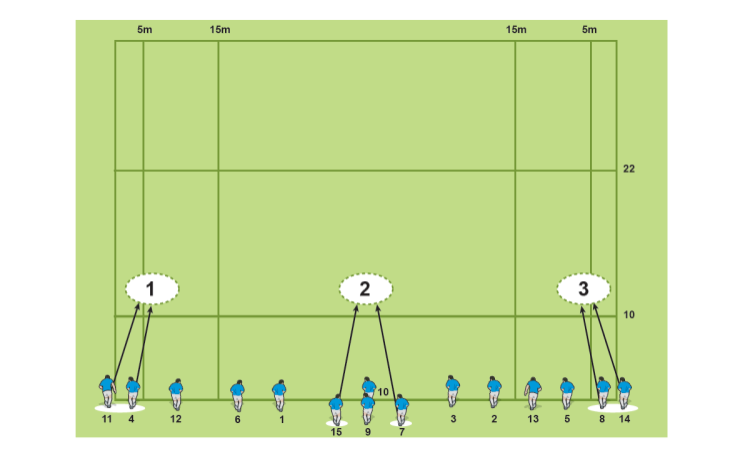You are viewing
1 of your 2 free articles
Double up in defence
Defenceby Dan Cottrell
U9 | DEFENCE 10
Encourage players to reposition themselves in pairs to close down an attacker and stop his progress

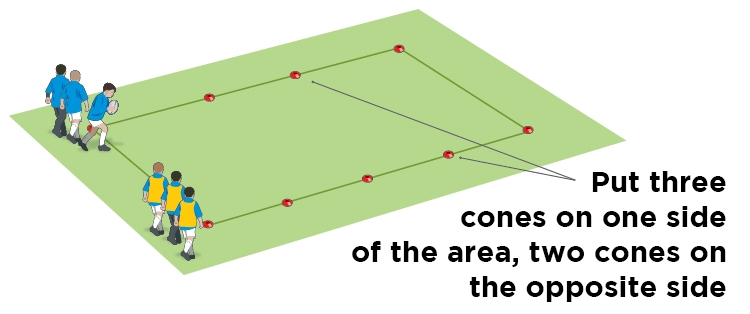
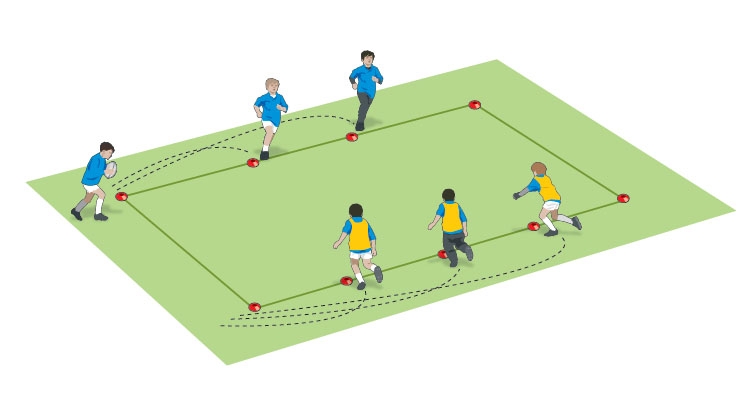
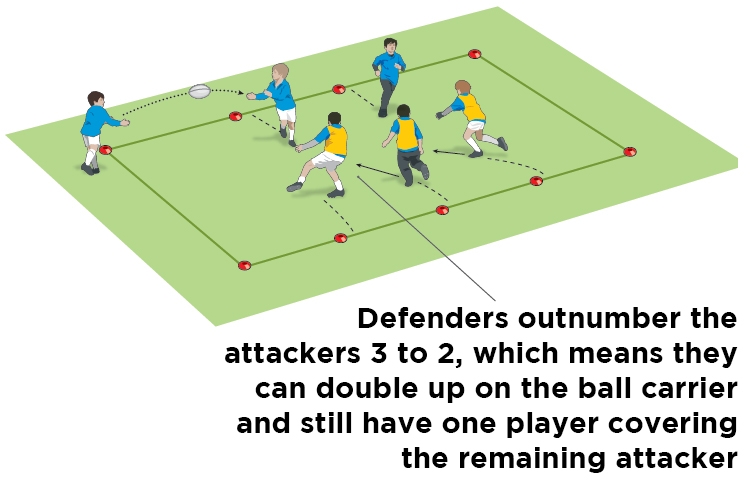
This is a dynamic game so you can have players queuing to take their turn, or run another game alongside.
“Communicate which player you are marking”
“Get feet close to the ball carrier”
Encourage players to reposition themselves in pairs to close down an attacker and stop his progress
- Mark out a 10m x 4m area with three cones spaced 2m apart on one long side and two cones spaced 3m apart on the opposite side.
- Put a feeder and two attackers on the corner next to the side with two cones. Put three defenders on the adjacent corner on the side where there are three cones.


- When you say “go”, the two attackers run to the cones on their side and defenders run to the cones on their side.
- As soon as the attackers have reached the cones, the feeder passes the ball to the attackers who aim to score on the opposite side.

- Defenders have to come forward and make a tackle, either individually or in pairs.
- Develop by removing the cones. Then take away one of the defenders.

You will need
- A 10m x 4m area
- 1 ball
- Cones
- Bibs
Got more players?
This is a dynamic game so you can have players queuing to take their turn, or run another game alongside.
What to tell your players
“Communicate which player you are marking”
“Get feet close to the ball carrier”
Newsletter Sign Up
Coaches Testimonials

Gerald Kearney, Downtown Las Vegas Soccer Club

Paul Butler, Florida, USA

Rick Shields, Springboro, USA

Tony Green, Pierrefonds Titans, Quebec, Canada
Subscribe Today
Be a more effective, more successful rugby coach
In a recent survey 89% of subscribers said Rugby Coach Weekly makes them more confident, 91% said Rugby Coach Weekly makes them a more effective coach and 93% said Rugby Coach Weekly makes them more inspired.
Get Weekly Inspiration
All the latest techniques and approaches
Rugby Coach Weekly offers proven and easy to use rugby drills, coaching sessions, practice plans, small-sided games, warm-ups, training tips and advice.
We've been at the cutting edge of rugby coaching since we launched in 2005, creating resources for the grassroots youth coach, following best practice from around the world and insights from the professional game.
More from us
© 2023 Rugby Coach Weekly
Part of Green Star Media Ltd. Company number: 3008779
We use cookies so we can provide you with the best online experience. By continuing to browse this site you are agreeing to our use of cookies. Click on the banner to find out more.





